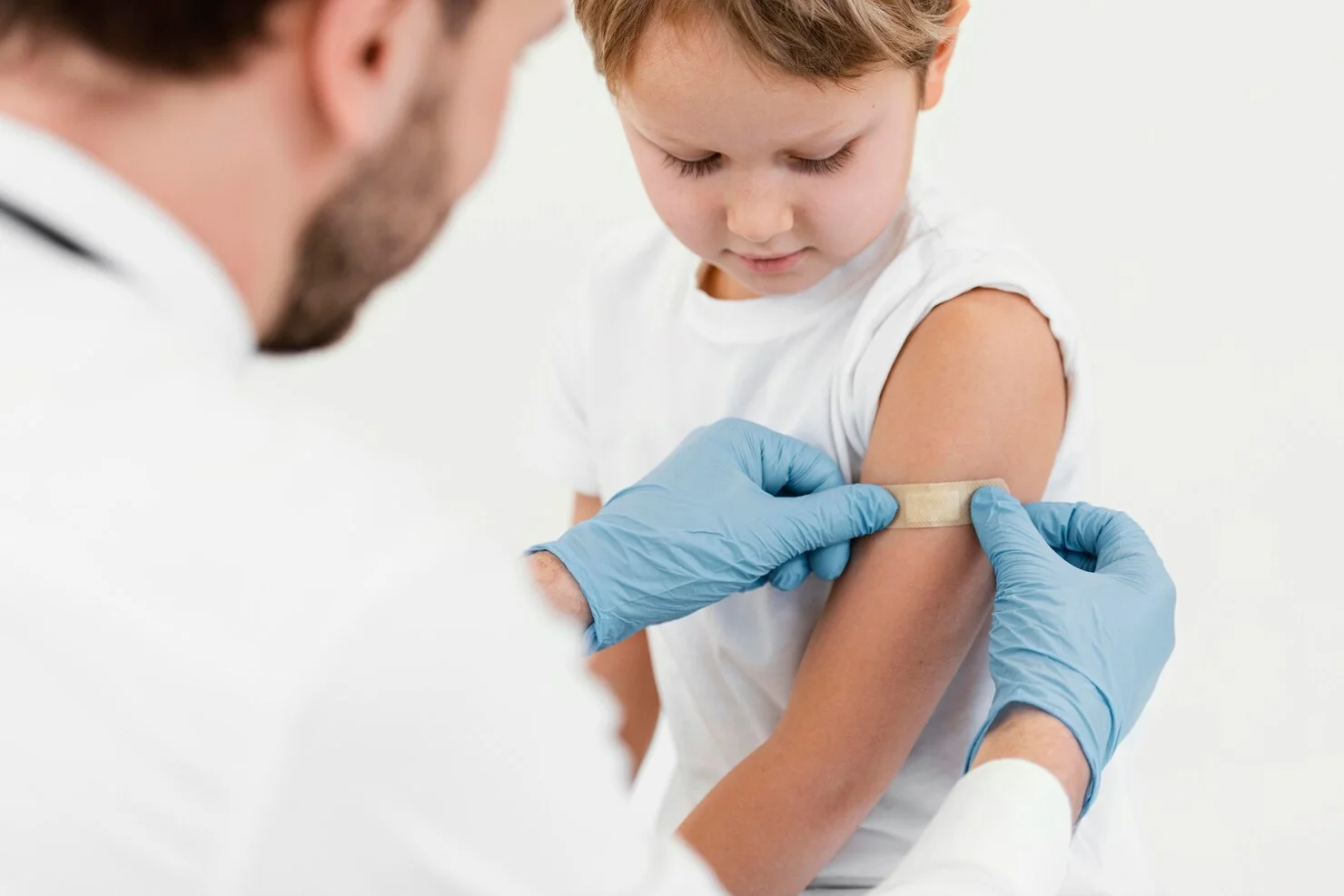A Parent’s Guide to Navigating Child Vaccination

Raising children brings times of happiness, learning, and crucial choices. A major choice that parents need to make concerns having their children receive vaccinations.
In the modern healthcare landscape, where information and misinformation are abundant, navigating this path can feel overwhelming. Mothers and fathers need to think about different things to keep their children healthy and safe when getting shots.
Here’s a parent’s guide to navigating child vaccination.
Understanding the Purpose of Vaccines
Knowing the purpose of vaccines is the first step toward making an informed decision. Vaccines are medical products made to help the body fight off certain germs and illnesses.
They work by introducing a harmless version of a germ, either a weakened virus, a dead virus, or just a piece of it, to the body’s immune system. This exposure can train the immune system to recognize and combat the real pathogen quickly and effectively if the child is ever exposed in the future.
This process is a natural rehearsal for the body’s defenses, preventing serious illness and complications.
However, for a deeper dive into pediatric wellness, many parents may check out valuable resources like just4kidshealth.com or consult reliable and experienced health professionals in their areas.
Understanding the Recommended Vaccination Schedule
Trusted groups like the CDC and AAP suggest when children should get their vaccines. This timeline isn’t arbitrary. It’s meticulously crafted based on extensive research into how a child’s immune system develops and when they’re most vulnerable to specific diseases. This timing plan helps shield kids before they might encounter harmful diseases.
Typically, the vaccination process begins at birth, with the first Hepatitis B vaccine administered before the newborn leaves the hospital. Subsequent vaccinations are given at well-child visits at 2, 4, and 6 months, protecting against diseases like rotavirus, diphtheria, tetanus, pertussis (whooping cough), Haemophilus influenzae type b (Hib), pneumococcal disease, and polio.
Boosters and additional vaccines, such as those for measles, mumps, rubella (MMR), and varicella (chickenpox), are also added later, around the first birthday and again before kindergarten. Adhering to this schedule can ensure a child is happy, healthy, and protected during their most vulnerable early years.
Addressing Common Concerns and Questions
It’s natural for parents to have questions about medical interventions for their children. Answering these worries with real facts helps parents choose with confidence. These concerns and questions include:
Vaccine Safety and Side Effects
Vaccines get some of the most thorough testing of any medical treatment. Before approval, they undergo years of testing in clinical trials. After approval, safety monitoring continues through systems.
Some usual reactions are gentle and short-lasting, like slight fever, crankiness, or tenderness where the shot was given. These normal reactions show the body is creating defenses against disease. Serious side effects are infrequent and carefully weighed against the severe risks posed by the diseases.
Ingredient Information
Understanding what is in a vaccine can alleviate fears. Ingredients like aluminum salts (adjuvants) are used in small quantities to strengthen the body’s immune response, meaning fewer viral or bacterial components are needed.
Trace amounts of formaldehyde may be present, but it’s important to note that the human body naturally produces and metabolizes formaldehyde in amounts significantly greater than what is found in any vaccine. These components are included safely in small amounts to make sure vaccines work well and stay good.
The Question of Overload
Some parents worry that giving multiple vaccines at once could overwhelm a child’s immune system. However, a baby’s immune system is remarkably robust. From the moment they’re born, infants are exposed to countless germs from the air, food, and contact with other people.
The antigens or the parts of the vaccine that trigger an immune response in all the recommended childhood vaccines combined are a tiny fraction of what an infant’s immune system successfully handles daily. Spreading out vaccines can only leave a child unprotected for an extended period.
Preparing for Vaccination Appointments
Thorough preparation can significantly ease the vaccination experience for all involved. Before the appointment, reviewing the anticipated vaccines and preparing a list of questions for the pediatrician can empower parents and ensure all concerns are addressed.
Practical steps, such as selecting clothing that allows easy arm or leg access, streamline the process. For young children, a familiar comfort item, like a cherished toy or blanket, is a powerful distraction and source of emotional security during the brief procedure.
Holding the child securely or soothingly engaging them during the appointment can help. For babies, breastfeeding or offering a sweet solution right before, during, or after the shot has been shown to reduce pain.
After the vaccination, parents can expect some mild side effects. Applying a cool, wet cloth to the sore area can help, as can giving a non-aspirin pain reliever if the pediatrician recommends. Monitoring the child for a day or two for any signs of a reaction is also standard practice.
The Broader Impact: Community Immunity

The advantages of vaccination help more than just one child. When most people in an area get vaccinated, diseases have trouble moving from person to person. This protective effect, herd immunity or community immunity, is vital for protecting those who cannot be vaccinated.
This includes newborns who are too young for certain shots, individuals with compromised immune systems, such as those undergoing cancer treatment, and those with specific severe allergies.
Choosing to vaccinate is a personal decision that also contributes to the collective health and safety of the entire community, preventing outbreaks of diseases that were once common.
Conclusion: An Informed Path Forward
The decision to vaccinate is a profound aspect of parenting, rooted in the desire to protect a child’s health. While the volume of information can be daunting, relying on evidence-based medicine and trusted pediatric advisors provides a solid foundation.
Vaccination represents a decisive, proactive step in safeguarding a child’s well-being and the community’s health, ensuring a healthier future for all. By remembering these details, parents can handle this important job with assurance and understanding.
